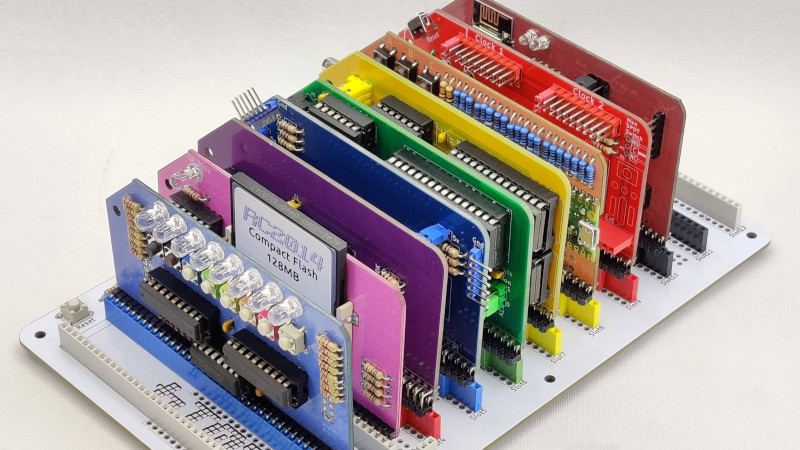We all love PCB artwork, but those who create it work under the restriction of having a limited color palette to work with. If it’s not some combination of board, plating, solder mask, and silk screen, then it can’t easily be rendered on a conventional PCB. That’s not the end of the story though, because it’s technically possible to print onto a PCB and have it any color you like. Is it difficult? Read [Spencer]’s experience creating a rainbow Pride version of his RC2014 modular retrocomputer.
Dye-sublimation printing uses an ink that vaporizes at atmospheric pressure without a liquid phase, so a solid ink is heated and the vapor condenses back to solid on the surface to be printed. Commercial dye-sub printers are expensive, but there’s a cheaper route in the form of an Epson printer that can be converted. This in turn prints onto a transfer paper, from which the ink is applied to the PCB in a T-shirt printing press.
[Spencer] took the advice of creating boards with all-white silkscreen applied, and has come up with a good process for creating the colored boards. There is still an issue with discoloration from extra heat during soldering, so he advises in the instructions for the kit to take extra care. It remains however a fascinating look at the process, and raises the important point that it’s now within the reach of perhaps a hackerspace.
Regular readers will know we’ve long held an interest in the manufacture of artistic PCBs.
















Cool! Very informative, must keep this one in mind.
I wonder if kapton or similar tape could be used ro protect the board? It’d be a real pain for any pads close together, but…
It’s be a good way to practice clean soldering tho with better visual feedback.
They did use kapton but found too time consuming and declared too difficult to apply for a full smd board.
I’m thinking he could use a kapton sheet (no adhesive) and a vinyl cutter to make a reusable heat protector jig.
Instead of single color each side, will someday we have full color image printed?
Great idea! Next step further might be holographic prints?
Dyesub print to transfer paper, then a heat press t transfer to a PCB? Why the rigamarole?
I can understand the expense of a proper UV printer might put many off, but:
Why not just inkjet print right on the PCB? Lots of inkjets can handle PCB thickness just fine. No muss, no fuss, no fiddly thermal transfer process.
I’m wondering if ChipQuik low temperature solder or an equivalent would reduce or eliminate the discoloration caused by soldering.
They say pride colors, I see C64 and Spectrum